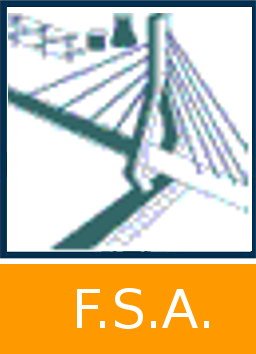Study of the nonlinear behavior of large bridge supports under earthquake solicitations
Flamigni, Filippo 
Promotor(s) :
Gens, Frédéric 
Date of defense : 26-Jun-2023/27-Jun-2023 • Permalink : http://hdl.handle.net/2268.2/17812
Details
| Title : | Study of the nonlinear behavior of large bridge supports under earthquake solicitations |
| Author : | Flamigni, Filippo 
|
| Date of defense : | 26-Jun-2023/27-Jun-2023 |
| Advisor(s) : | Gens, Frédéric 
|
| Committee's member(s) : | De Ville De Goyet, Vincent 
Degée, Hervé 
Collin, Frédéric 
|
| Language : | English |
| Discipline(s) : | Engineering, computing & technology > Civil engineering |
| Institution(s) : | Université de Liège, Liège, Belgique |
| Degree: | Master en ingénieur civil des constructions, à finalité spécialisée en "civil engineering" |
| Faculty: | Master thesis of the Faculté des Sciences appliquées |
Abstract
[en] For very large bridges it is important to efficiently manage displacements and deformation
during earthquakes and under the passage of vehicles to avoid damage and
collapse of the structure.
Classic solutions consist in implementing spring type shock absorbers, which convert
the kinetic energy into heat energy, helping in dissipating it. A very effective and rather
simple solution which is often adopted for large bridges and other sensitive structures
is to implement pendular bearings, characterized by a curved geometry: they have the
dual role of vertical support and of horizontal elastic support, the stiffness of which is
proportional to the vertical reaction divided by the radius of curvature (called “pendulum
effect of the support”).
Between the moving parts of the support device, the sliding surfaces may have some
roughness: in this case, the frictional force must be defeated before any displacement
can take place. Whenever a force which would cause the structure to undergo a horizontal
movement is applied:
• the deck is horizontally stationary if the horizontal force is smaller than the frictional
force;
• the deck moves if the horizontal force is greater than the frictional force;
• if there is movement, the deck will undergo both horizontal and vertical displacement.
The behaviour is therefore, by definition, nonlinear.
During the study of the Third Bosphorus Bridge in Turkey all phenomena were considered
for the passage of a train; for the earthquake, on the other hand, only the pendulum
effect was taken into account, while friction has been neglected.
The present Master Thesis consists of studying and modelling the entire behavior, with
both pendulum effect and friction, under earthquake solicitations, analyzing a real case,
specifically the Third Bosphorus Bridge, and evaluating the dynamic response in time.
File(s)
Document(s)
Cite this master thesis
The University of Liège does not guarantee the scientific quality of these students' works or the accuracy of all the information they contain.


 Master Thesis Online
Master Thesis Online



 All files (archive ZIP)
All files (archive ZIP) Master Thesis.pdf
Master Thesis.pdf

